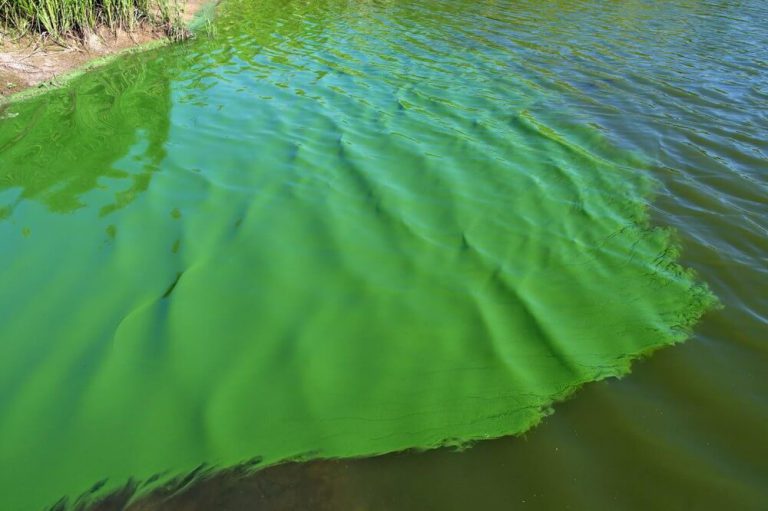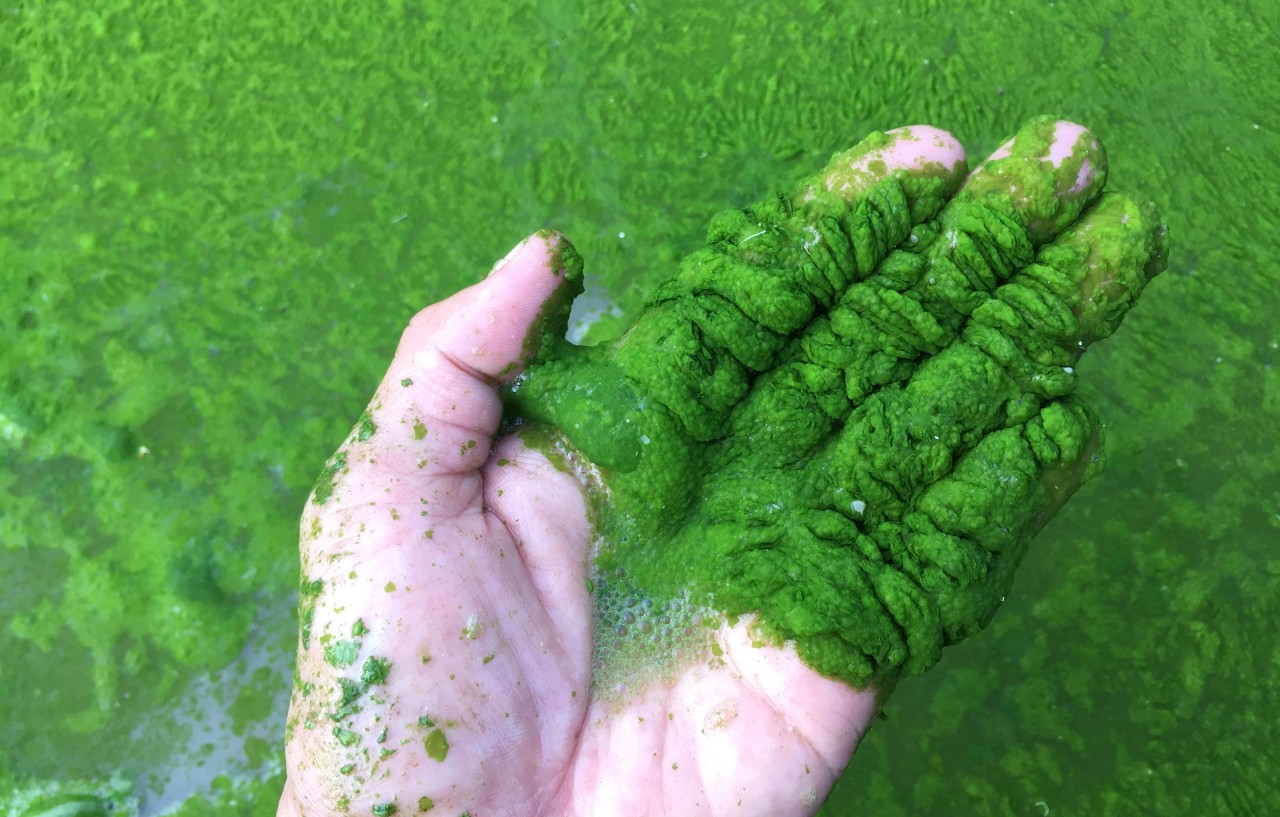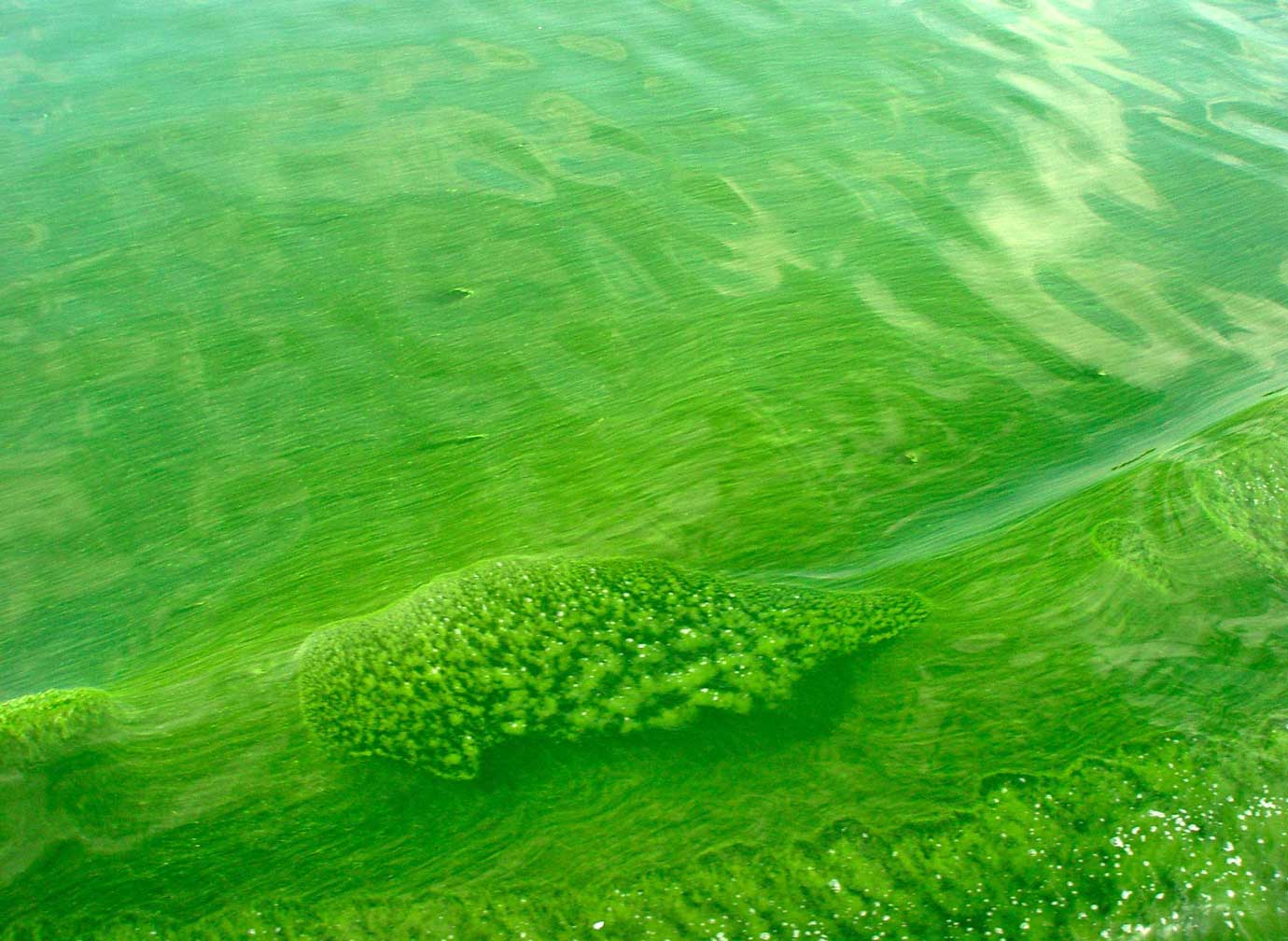Blue-green algae (cyanobacteria) and green algae are commonly found in fish ponds. If left uncontrolled, they can cause significant problems for the pond environment and fish. Below is an overview of the causes, effects, and solutions for dealing with algae growth in fish ponds:
1. Causes of Algal Bloom
- Excess Nutrients (Nitrogen & Phosphorus): Overfeeding fish or improper water management leads to an accumulation of nitrates and phosphates, promoting algal growth.
- Low Oxygen Levels: Poor circulation, high organic pollution, and overstocking of fish reduce oxygen, which enhances algal proliferation.
- High Water Temperature: Algae thrive in warmer waters, particularly during summer months.
- Excessive Sunlight: Strong sunlight directly on the pond increases algae production
2. Effects of Algal Blooms
- Water Discoloration: The pond water turns dark green or bluish due to algal overgrowth.
- Unpleasant Odor: Cyanobacteria release unpleasant smells when they decompose.
- Oxygen Depletion: Algae consume large amounts of oxygen at night, which can lead to oxygen shortages for fish, causing fish to gasp at the surface or even die.
- Weakened Fish Health: Fish exposed to cyanobacteria may have reduced immune systems, increasing their susceptibility to diseases.
3. Algae Control Measures
- Nutrient Management: Regulate fish feeding to avoid overfeeding, and use efficient filtration to remove excess nitrates and phosphates.
- Improve Water Circulation: Using pumps, aerators, or filters will increase water movement and oxygen levels, reducing algae growth.
- Light Control: Shade the pond using nets or plant trees around the pond to reduce direct sunlight on the water.
- Biological or Chemical Treatments: Use beneficial bacteria or specific chemicals to control algae, but follow manufacturer guidelines to avoid harming the fish and ecosystem.
- Algae-Eating Fish: Introduce species such as grass carp or tilapia to naturally control algae.
4. Preventative Measures
- Proper Feeding Practices: Avoid overfeeding and use high-quality fish feed to reduce waste.
- Regular Water Quality Monitoring: Track pH, temperature, oxygen levels, nitrate, and phosphate concentrations to make necessary adjustments.
- Routine Filtration: Install biological or mechanical filtration systems to remove organic debris that can fuel algae growth.
Special Considerations:
- Algae bloom should be treated early to avoid shocking fish. When algae die off in large quantities, oxygen levels can plummet, stressing or killing the fish. Managing nutrient inputs and using microbial treatments to break down dead algae is essential to prevent the recurrence of blooms.
Guidelines for Algae Treatment:
- Regularly Inspect the Pond: Address the algae problem early before it becomes severe.
- Handling Large Blooms: During large algae blooms, careful management is required. Overuse of chemicals can lead to a sudden algae die-off, causing oxygen depletion.
- Microbial Products: These can decompose dead algae, reducing nutrient buildup and preventing further algae growth.
By maintaining balanced water chemistry and carefully monitoring the pond, algal blooms can be effectively managed, ensuring a healthy environment for fish



